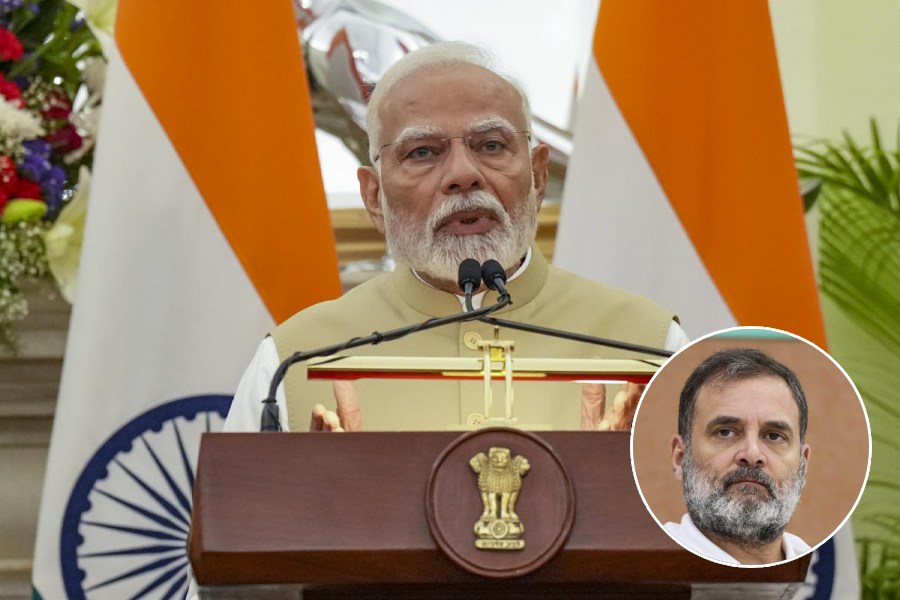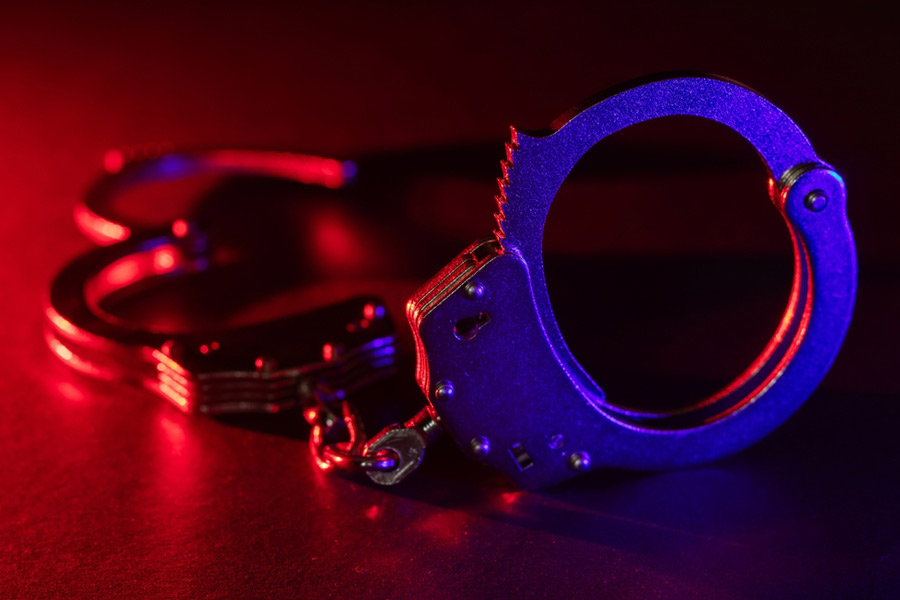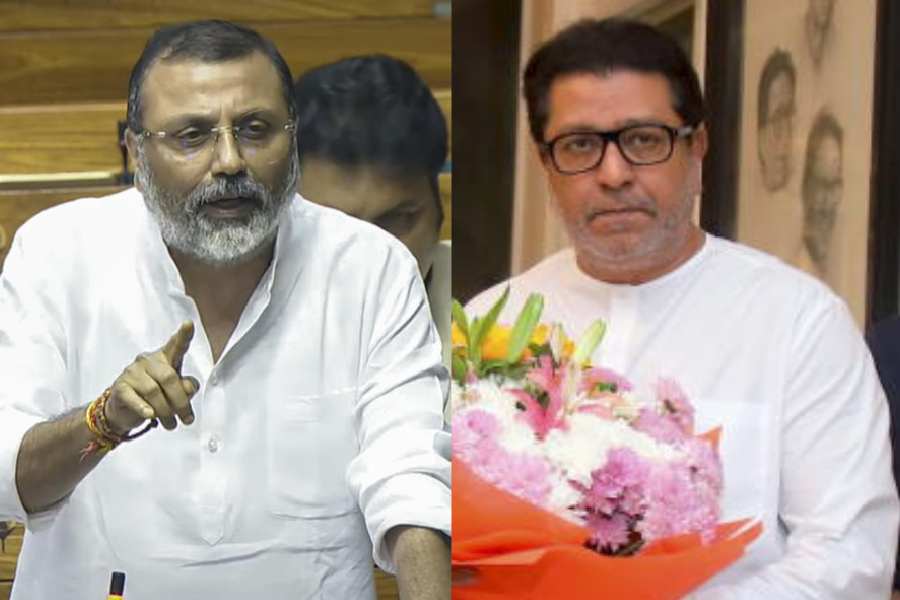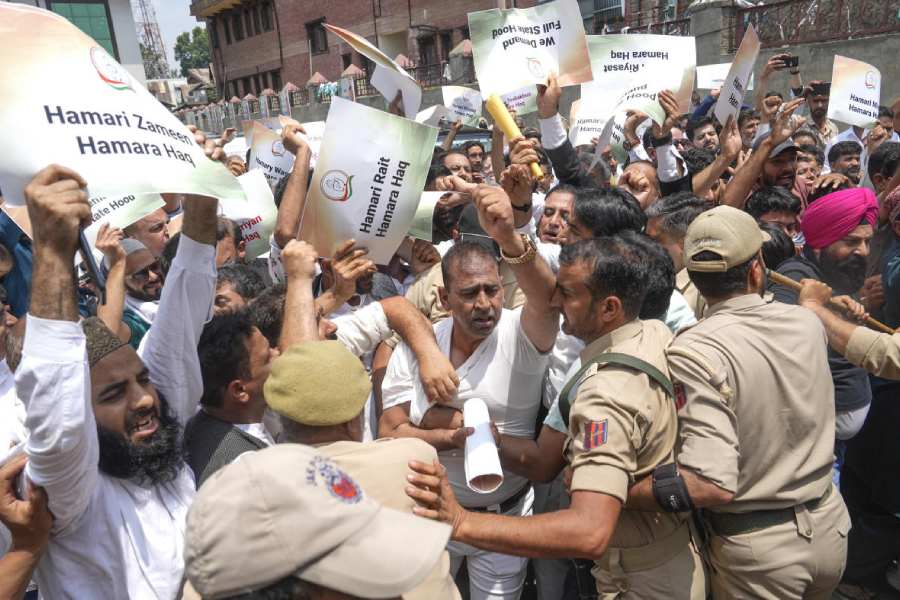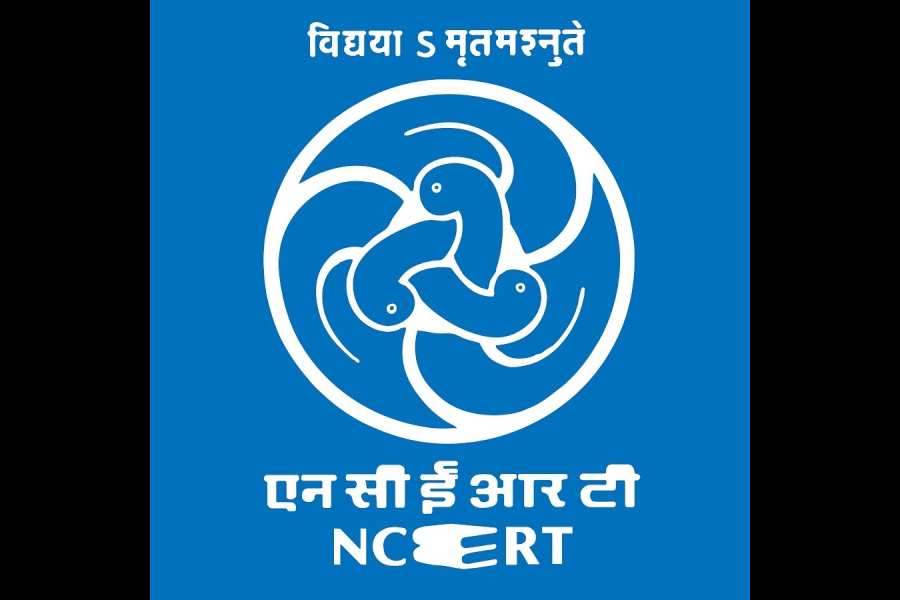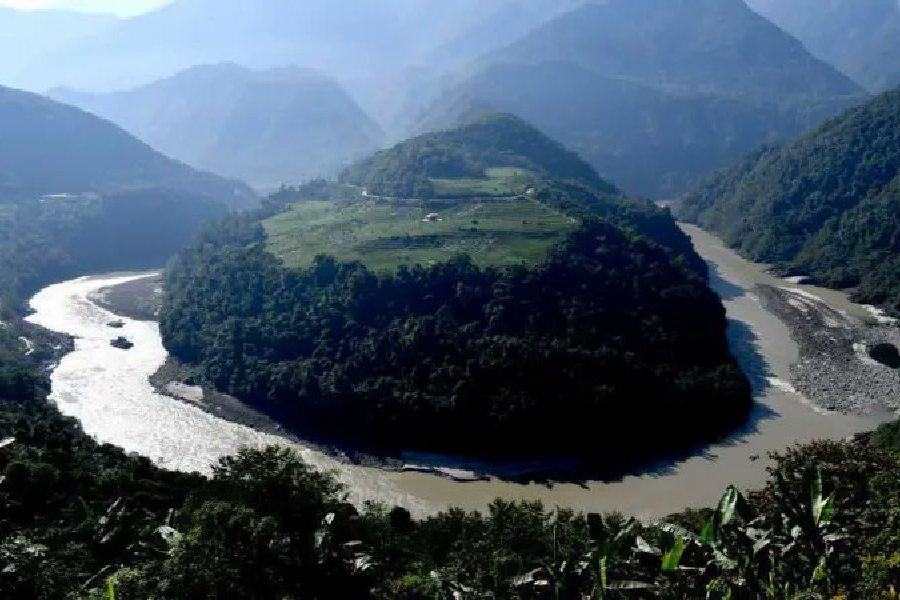 |
| Naga guards patrol outside the general headquarters at Camp Hebron. File picture |
Jalukie Zande (Nagaland), Jan. 23: It is about 4.30 in the afternoon. We probably have another half-an-hour of daylight left.
The hazard lights of our Maruti 800 are blinking. Visibility is near zero on the road to the council headquarters of the National Socialist Council of Nagalim (Isak-Muivah). There is a dusty haze all around as buses, cars and SUVs seem to dance their way over an uneven road back to Dimapur from Camp Hebron. This is where the NSCN (I-M) leaders, Isak Chishi Swu and Thuingaleng Muivah, are staying.
The first day of the Fourth Consultation of the Naga People for Strengthening Indo-Naga Political Talks has just ended. Nearly 6,500 delegates are now on their way back to Dimapur.
After stopping for tea at a Dimasa village, Doyapur, our Maruti 800 makes its way slowly through the dust on the kutcha road to the Jalukie Zandi village area where Camp Hebron had been set up. David Mero, who is driving me, is a joint secretary in the self-styled GPRN (Government of the People?s Republic of Nagalim) and currently deputed to serve in the ceasefire monitoring cell.
The structure of the GPRN is unexpectedly elaborate and formal. There is the Yaruiwo (President), Isak Swu, Ato Kilonser (Prime Minister) Thuingaleng Muivah, who then has a council of ministers comprising Kilonsers (cabinet ministers) and Deputy Kilonsers (ministers of state). The various ministries have their bureaucracies with section officers, under secretaries, deputy secretaries, joint secretaries and secretaries.
When the convener of the ceasefire monitoring cell, Brigadier Phungthing Shimrang, calls David on the mobile phone to enquire about my whereabouts, he Sirs him ? using ?sir? instead of ?yes?, as Indian bureaucrats do.
The Naga army also is no rag-tag bunch and is very well structured. We realise this on reaching Camp Hebron. The gate was signposted and manned by smartly dressed soldiers in fatigues with walkie-talkies crackling. Entry was strictly monitored. Captain Edwin talked to his superiors on his walkie-talkie and guided the car inside the camp.
What is Camp Hebron now, used to be a Nagaland Armed Police post a few years ago. It was then converted into a designated camp for the NSCN (I-M).
The remnants of the old concrete buildings are still there but the Nagas have transformed the place into a bustling mini-township.
New offices, secretariats, a Parliament Hall (Tatar Hoho), barracks, kitchens, meeting halls and even small huts with carrom tables for off-duty soldiers have been constructed using bamboo, bamboo mats and thatch. All roads and buildings are clearly signposted. Naga soldiers ? boys and girls ? in their jungle fatigues and green berets, some with automatic rifles and others with pistols strapped to their sides go about their business briskly. The men have smart haircuts and the women have their hair tied in buns. All of them wear closed leather or canvas shoes. Some of the women soldiers even have lipstick on.
Isak Swu and Thuingaleng Muivah, we are told, are addressing the ?Arunachalis? ? Nagas from the Tirap and Changlang districts ? but the meeting is about to get over. Isak Swu shakes my hand with his trademark gentle smile. ?You have come so late. I hope you will stay tonight so that we can talk,? Muivah says.
Unfortunately I have to get back to Dimapur. ?OK then, get into my vehicle. We will go to the GHQ and have a cup of tea,? says Muivah getting into his bullet-proof Bolero. Instead of a number plate, it has a brass plate with ?Ato Kilonser, GPRN? (Prime Minister, GPRN) in shining letters on red background. A pilot car escorts Muivah?s Bolero and an open white Maruti Gypsy mounted with a machine gun. It is full of young soldiers toting automatic weapons.
GHQ (general headquarters) is 2 km further into the jungle along a kutcha road cut into the hillside. We were up to now in what is called the council headquarters (CHQ). ?Our Naga army soldiers made this road,? Muivah says with obvious pride as we go over a series of bumps. There is a nip in the air now as we move through what seems like a teak forest.
At last, we reach a huge green and red gate built in the style of gates at the entrance of Naga villages. It announces that we are in the GHQ of the Naga army. With surprising efficiency, all the other vehicles suddenly disappear and Muivah?s Bolero is parked in front of a majestic Naga hut.
The bamboo mat walls of the hut are covered in cloth sheets. There are wire-mesh windows with curtains and there is a sofa and a table. Muivah smiles and says: ?Welcome to my palace.?
There is electricity and someone quietly switches on a heater. A woman soldier in glasses produces two cups of tea with amazing alacrity. Muivah says that ever since he has come here, he has had a 16-hour day. ?We have got no rest since we have come here. So many people keep coming to meet us. And you cannot refuse to meet them,? Muivah sighs.
He mourns the untimely death of national security adviser J.N. Dixit. ?Was not M.K. Narayanan the chief of the Intelligence Bureau once? He was present in our meetings with the Prime Minister, the home minister and Sonia Gandhi. And these ministers who are to negotiate with us, do they understand what the unique history and situation of the Nagas means because the solution hinges on that? I hope they are being briefed properly,? he says.
But Muivah is tired. We agree to meet again the next day. His assistant Railung is deputed to take me down the hill where my car is waiting. But my guide is nowhere to be found. I am stuck at Camp Hebron. ?We have got good arrangements for sleeping,? a soldier manning the main gate of the camp says helpfully. Then suddenly there is a Scorpio with four Nagas going back to Dimapur and I hitch a ride with them.


